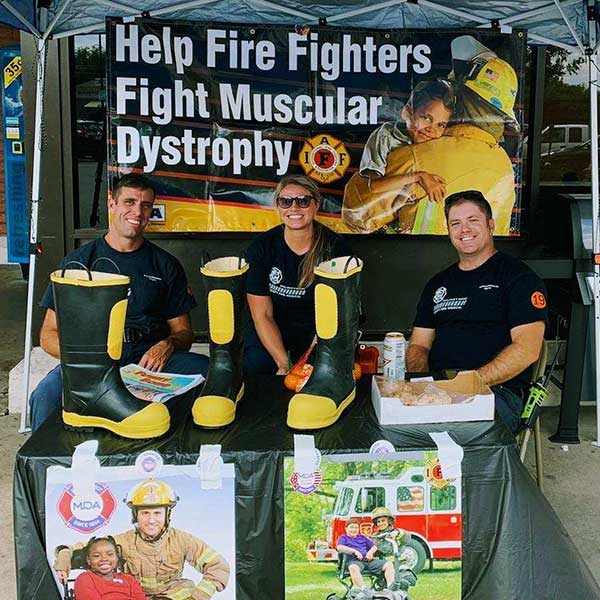History of the GMIHC
This crew history was written by members of the Granite Mountain Hotshots for publication in “Hotshot Crew History of America” that is currently in production. Its release date is unknown.
In the spring of 1990, the City Manager of Prescott, Forest Supervisor of the Prescott National Forest, and Prescott Fire Department Staff met to discuss the potential for a devastating wildfire that could affect the community. The ideas that came out of the meeting were for the community to come together with the agencies to prepare for and mitigate this potential problem. The Prescott City Council, Yavapai County, Arizona State Land Department, and Prescott National Forest signed a joint resolution creating the Prescott Area Wildland Urban Interface Commission (PAWUIC), which is a citizen-led, agency-supported group that continues today as a national model in coordinating and mitigating the risk of wildfire in the Prescott area.
The year 2000 saw the implementation of the National Fire Plan. Prescott was well on its way with PAWUIC to take advantage of the resources in this plan. The problem was that the public education was happening, but we could not get the work done on the ground to protect the community.
In 2001, with the support of PAWUIC and the City of Prescott, the Prescott Fire Department created a Wildland Division. The first order of business for the Wildland Division was to conduct a risk assessment and to develop a community-wide Vegetation Management Plan for the City of Prescott. The risk assessment found that Prescott was “living on the edge” and was designated as one of nine communities in the southwestern United States at risk of catastrophic wildfire. The Vegetation Management Plan addressed the need for fuels reduction and the adoption of a
Wildland Urban Interface Fire Code. The Division then took on the task of creating defensible space on private and City owned property via mechanical treatment carried out by a grant funded Fuels Management Crew of five to ten personnel.
On May 15, 2002, the Indian Fire burned 1,300 acres and seven structures adjacent to and within the City of Prescott and forced the evacuation of 2,500 residents. This incident had a profound effect on public opinion surrounding the Fire Department’s new fuels management program and also planted the seed for an expansion of the duties of the Fuels Management Crew.
In the spring of 2004, the Fuels Management Crew evolved into Crew 7, a Type 2 Initial Attack Crew, which not only continued the fuels reduction work, but also responded to wildfire and all-risk incidents both regionally and nationally. The Crew took the name “Crew 7” based on the number 7 being the common designator for all of the Prescott Fire Department’s stations and engines. The original logo was a pair of flaming dice that, of course, always came up seven.
The crew overhead consisted of Crew Boss Tim McElwee, along with Marty Cole, Duane Steinbrink, Todd Rhines, Dan Bauman and Eric Marsh. Seasonals made up the rest, with some members having previous Hotshot experience. From the beginning, the idea that it would be possible to develop a Type I IHC was considered, and every attempt was made to meet IHC requirements in both policy and
professionalism.
Prior to the beginning of the 2007 season, Crew 7 was granted IHC trainee status by the Southwest Coordinating Group. This prompted a name change. Local landmarks provided choices such as Iron Springs, Sierra Prieta, and Whisky Row, but Granite Mountain Hotshots won out and the crew was named after the dominating land feature just northwest of Prescott.
By this time, the crew had eight full-time permanent positions with the balance still being filled with seasonal employees. A tradition began of hiring three or four “overhires” which allowed for the fuels projects to continue while the crew was off district, and also allowed for some extra depth of employees in case of injuries or performance issues.
The IHC certification process was challenging, partly because no non-federal crew had ever been certified in Region 3 before. Through the use of the Region 5 IHC certification process, which later became
the template for the national standard, and tremendous support from the fire community, Granite Mountain persevered.
In September of 2008, while on an assignment on the Klamath National Forest, the crew received a phone call from their home unit stating that they had just received certification as an Interagency Hotshot Crew. A short ceremony ensued where the ‘t’ that stood for ‘trainee’ on the back of the Superintendent’s truck was scraped off, finally reading: Granite Mountain IHC.

Support Our Mission
100% of all proceeds from donations, merchandise sales, and fundraisers go back out to the community.
